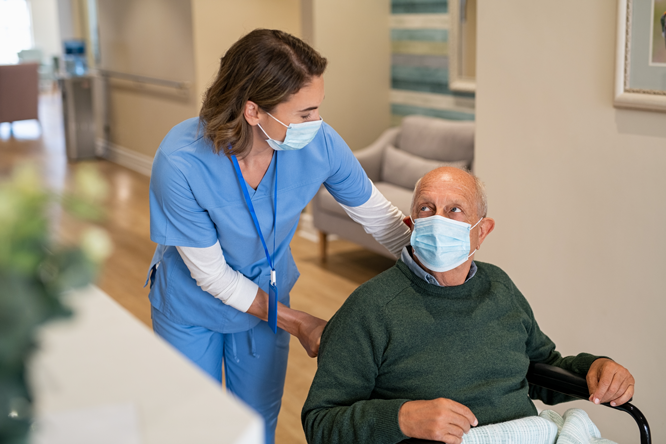
As we start a new decade, significant transformation is underway with Medicare payment for post-acute care. The Patient-Driven Payment Model (PDPM) for skilled nursing facilities (SNFs) started October 1, 2019, and the Patient-Driven Groupings Model (PDGM) for home health agencies (HHA) went into effect January 1, 2020. These transformative models hold great promise, but also come with unique challenges.
Effects of PDPM So Far
Under PDPM, initial payment rates appear to be increasing for many SNFs. This is primarily due to three things: a one-time increase in Non-Therapy Ancillary (NTA) payments; increased attention to payment-sensitive MDS items; and changes in clinical service offerings designed to leverage new opportunities.
In interpreting financial performance under PDPM, it is important to make the comparison to the previous RUGs payment system on an apples-to-apples basis. That is, after accounting for changes in the market basket and the value-based purchasing adjustment that also went into effect October 1.
It is also important to understand the one-time effect of the “hard transition” to PDPM on October 1, 2019, and the fact that NTA payments are tripled for the first three days of a length of stay. Using typical rates and lengths of stay, the amount attributable to the NTA increase equates to an additional 4 percent increase in October rates for most SNFs, which will not be repeated in subsequent months.
Another early impression is that many SNFs have taken to heart the advice to have robust 72-hour meetings and to increase involvement of nurses and social workers in interdisciplinary team (IDT) meetings. Members of the team now feel more involved in shaping the care plan.
Many Medicare Advantage plans appear to have migrated to PDPM, though notice was given late in the transition to PDPM and aspects of the authorization process have been worked out on the fly. The consolidation of payment platforms between Part A and managed care holds promise as an improvement, allowing SNFs to focus their efforts. Nuances will remain among plans, however, and even though plans might be using PDPM as a payment basis, the rates are not always the same as what Part A pays for the same patient.
Things to Watch For
Despite the initial good news, there are warning signs on the horizon, which will require vigilance. Some SNFs are struggling with basic blocking and tackling that can put a crimp in their revenues or expose the facility to compliance issues. For instance:
- Facilities are generally flying blind about the accuracy and completeness of the payment-sensitive items on the MDS, potentially leaving precious revenue on the table. Our reviews have shown vulnerabilities in the coding for NTAs as well as secondary splits in the Speech and Nursing components.
- As patients completed their courses of therapy, some facilities have struggled to identify nursing needs that would justify continued Medicare coverage, resulting in shorter covered stays than otherwise would be the case.
- Another area of challenge has been ICD-10 coding, including identifying the primary diagnosis, properly sequencing secondary diagnoses, syncing all that up with the claim, and properly documenting the information.
Medicaid payments to SNFs may also undergo change in the coming year. The Centers for Medicare and Medicaid Services (CMS) recently announced that it is dropping Section G from all federally required item sets for the MDS starting October 1, 2020, in an effort to reduce the reporting burden on providers. This means that those states with a RUGs III or IV payment system will have to either add assessments (e.g., through the Optional State Assessment) or consider modifying their case mix payment system to work off available data items. Some states, such as Ohio, have already issued an RFP to look at possible changes to Medicaid payment for nursing facilities. New York providers are in active litigation with the State about budget-driven changes to the case mix payment system.
Next Steps for Providers
For 2020, every Medicare-certified SNF should have the following on their agenda to maximize positive effects of PDPM:
- Conduct a coding audit by a person independent of those who completed the MDS. While scrubbers and electronic tools may be helpful, there is no way to really know what you are missing except to dive into the records and notes and compare that to what was actually coded.
- Make sure that the patient’s skilled nursing needs are identified early in the initial assessment process and a care plan is established that explicitly recognizes those needs.
- Re-evaluate therapy contracts (where applicable). Therapy is still a very important service, and for many years under RUGs, providers delegated much of that to contractors. In the run-up to PDPM, new contracts were signed on a stopgap basis. As therapy is adjusted under PDPM, careful attention must be paid to outcomes. Those facilities with historically high therapy utilization and below average functional improvement scores need to be especially vigilant.
- Consider opportunities for increased admissions of more medically complex patients and for clinical service line development such as respiratory therapy, wound care, dialysis, and restorative nursing.
Now home health is embarking on largely the same journey with a few important twists. The new 30-day payment episodes will require a more predictive focus on care needs and an increased understanding of how care provided in the first 30 days will possibly affect care in the second 30 days. Payments to HHAs are now increased for patients admitted from institutions, which provides increased impetus for partnerships between HHAs and SNFs and hospitals. As with SNFs, there will now be increased attention to ICD-10 coding as HHA payment rates are largely dependent on HHA mastery of coding nuances.
Moving Forward Post-Implementation
MedPAC, CMS, and others will be watching closely as these payment systems unfold, and will likely make adjustments as provider practices evolve. In the meantime, providers should seize opportunities and address challenges right now. HDG can help. Our solutions include education and training, clinical coding and reimbursement auditing, benchmarking and rate projections, clinical service line development, and more. Please call or email us at 763.537.5700 or info@hdgi1.com and visit our website.












